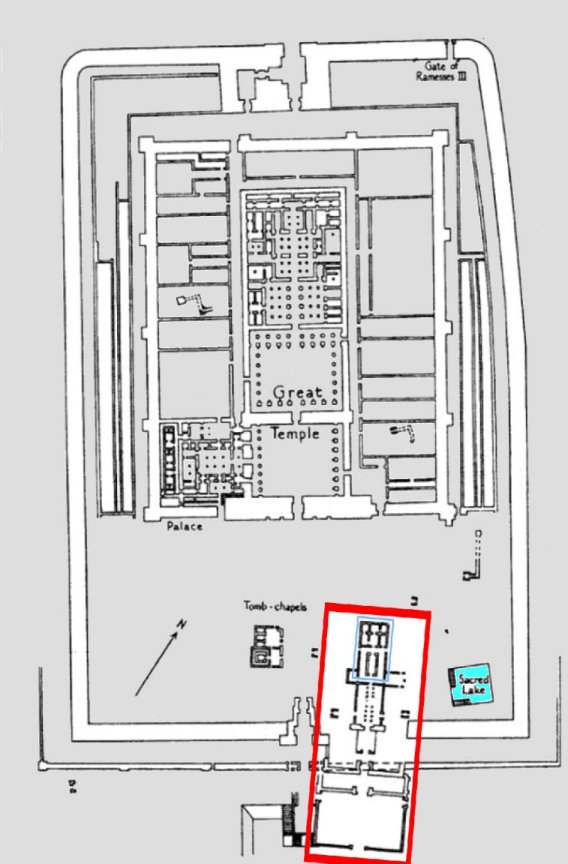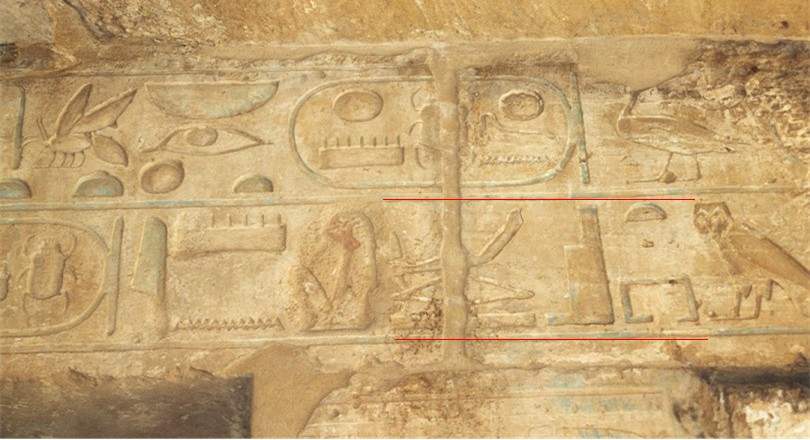|
Medinet Habu |
last update: 05.01.2010 |
![]()
| Beside the other buildings on the west bank of Thebes (Djeser djeseru, rock tomb, royal tomb and Valley Temple) Hatshepsut has built or finished a small temple of Amun ("Djeser set" or "Holy is the Place" became; see hieroglyphic signs above) in the area of Medinet Habu. |

| The picture above shows a modern floor plan of the mortuary temple of Remesses III at Medinet Habu, the red frames encircles the so called "small temple of Amun" ("Djeser Set"), the blue frame encircles the part of the temple which was erected by Hatschepsut und Thutmosis III. |
|
The small temple is located directly on the right
side of the center axis of the temple of Ramesses III (which is formed by the "High
Gate" and the 1. pylon).
The location of the small temple of Amun is possibly connected with the myth, that Medinet Habu was likewise a place, at which a primeval mound emerged from the tides of the primeval ocean "Nun" during the formation of the world. To this place the creator-god Amun-em-ipet moved during the decade festival (testified since Ramses II) from his residence at Luxor temple and united with his own primeval form, the primeval snake Kematef living in the earth (= Amun-Kematef, member of the Ogdoad). Afterwards Amun-em-ipet revived the mortuary cult for the Ogdoad (which were respected as his ancestors) buried here. He once more animated their Kas and "revived" therefore the world which had arisen from them (Bell, in 1998). Due to another interpretation this place was believed in antiquity to be the burial place of Amun. |

|
Above the name of the temple is written in the lower row of the inscriptions in the gallery. The row above mentions the King of Upper and Lower Egypt, Lord of the Rites, Men-kheper-Ra Setep-en-Ra. |
| However, in any case the location of the small temple of Amun was regarded as a holy place, i.e. a special form of Amun was worshipped here - the Amun of the "Holy is the Place" (Amun of the Djeser set). |